Featured Creature: Hartmann’s Mountain Zebra
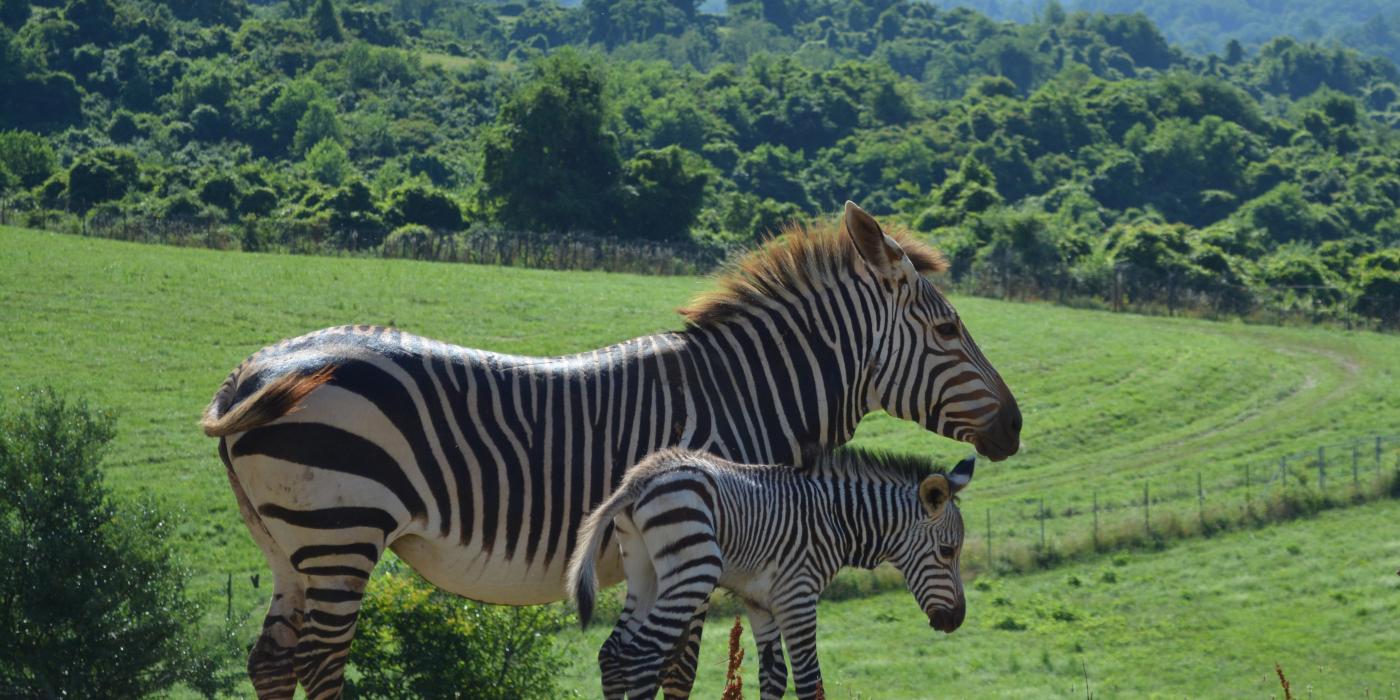
What’s black, white and adorable all over? Our new Hartmann’s mountain zebra colt! Born July 2 at the Smithsonian Conservation Biology Institute, he already is melting our ungulate team’s hearts with his playfulness and curiosity. Get to know him in this Q+A with SCBI animal keepers Morgan Vance and Tara Buk.
What is our zebra colt’s personality like?
Over the past month, we’ve had great fun watching our playful zebra colt explore his surroundings. Much like his dad, 5-year-old Rogan, our colt is a bit goofy. One minute, he will be zooming around his yard, and the next he will be laying down. Because he is getting used to all of the new sights and sounds, he is extremely inquisitive and seems to be fascinated by everything.
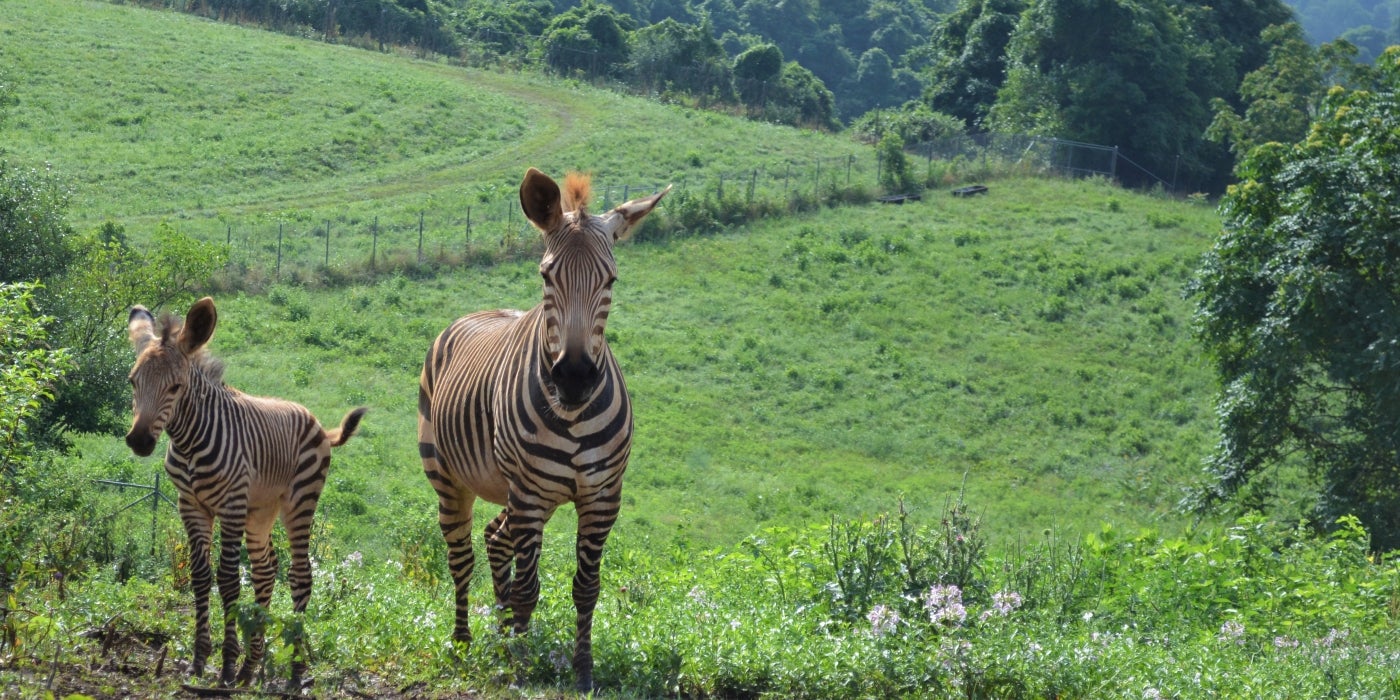
How does the colt spend his day?
Hartmann’s mountain zebras spend most of their time grazing. Even through the colt is primarily consuming milk at this time, we have started to see him show interest in grass. He will pluck little blades, then toss then about and play with them. He is quite a handful, but 6-year-old mom Mackenzie always keeps a watchful eye on him. In another month, he will be eating grass regularly.
Before Mackenzie gave birth, she shared her yard with an unrelated 7-year-old female Hartmann’s mountain zebra named Xolani. We wanted to give Mackenzie some extra space where she could relax and have an uninterrupted birth, so we moved Xolani into an adjacent pasture, separated by a fence. There is enough room for them to be out of view, if they so desired.
Now that the colt is here, we’re finding that he is quite gregarious! He and Mackenzie frequently spend their morning near the barn and the fence line that separates their pastures. It is clear from the interactions between the colt and Xolani that they are very interested in one another. Dad Rogan is in another yard altogether and has not had an interactions with his son, but that is typical for this species.
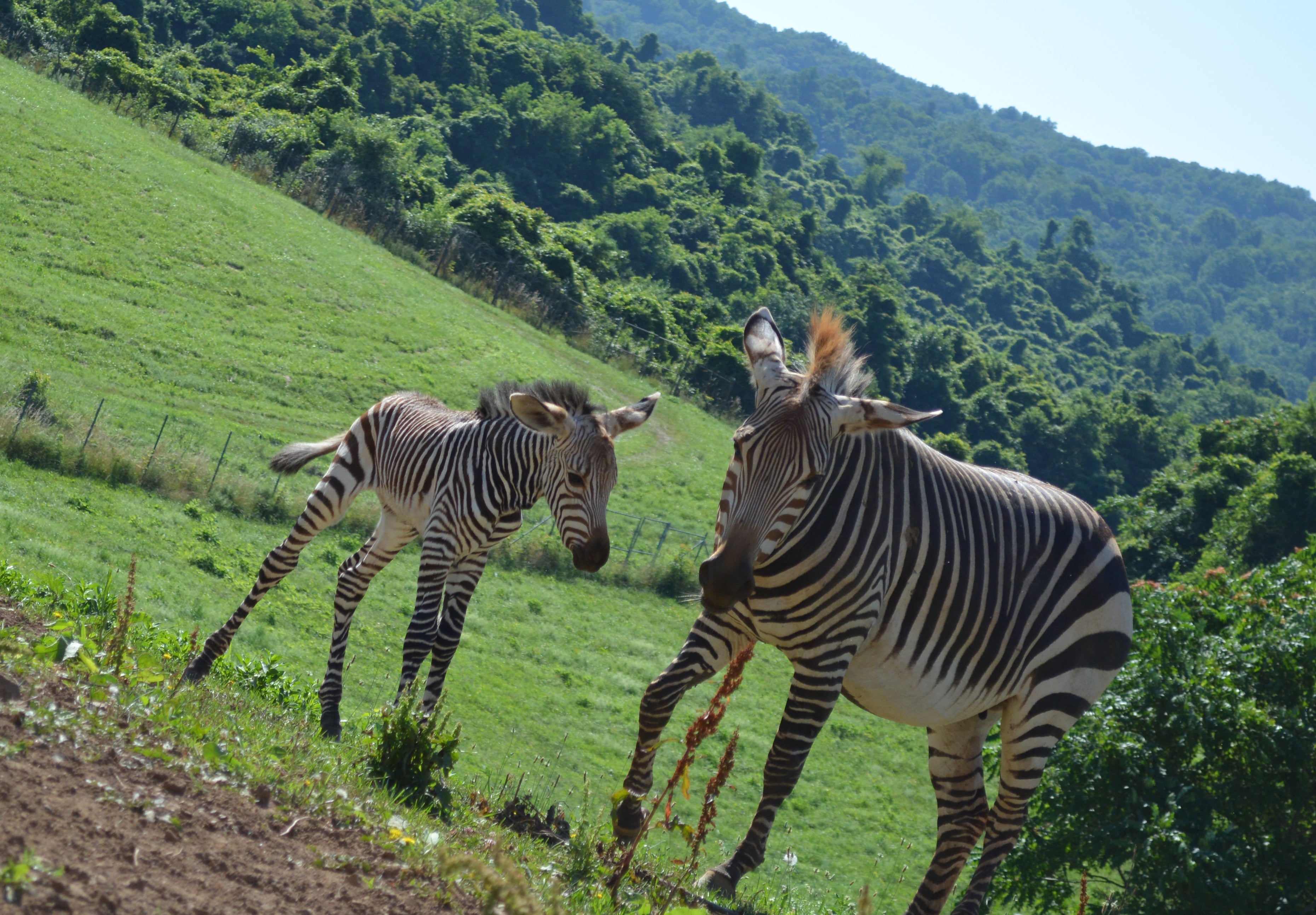
How is first-time mom Mackenzie adjusting to motherhood?
We are pleasantly surprised that Mackenzie has turned out to be such a wonderful mother. Around keepers, she can be quite feisty and standoffish. Because of her wariness around people, she can be challenging to work with at times. But, that makes it all the more rewarding when we do earn her trust.
Given her personality, we were concerned whether she would have innate mothering abilities. Thankfully, she has been not only very protective of her colt, but also a great playmate for him. We watch these interactions often, and it’s very endearing to see their bond grow as they explore the pastures and barn areas together.
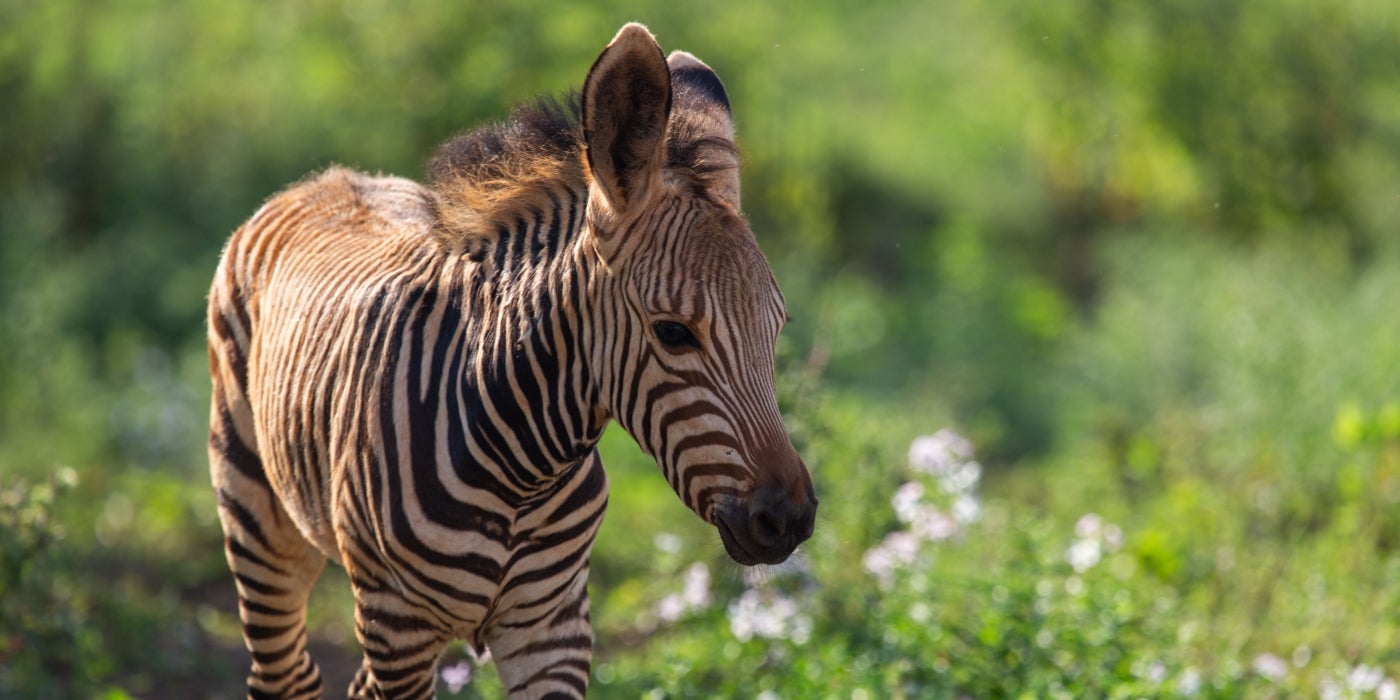
How much does he weigh?
We have not officially weighed the colt yet, but it is apparent that he is growing and healthy. We estimate him to weigh about 100 pounds. Being the inquisitive boy that he is, he has already begun exploring the chute system that leads to the scale whenever he and Mackenzie pass through that area. He continues to build confidence daily, and we hope to begin husbandry training sessions—including acclimating him to climbing upon a scale—soon.
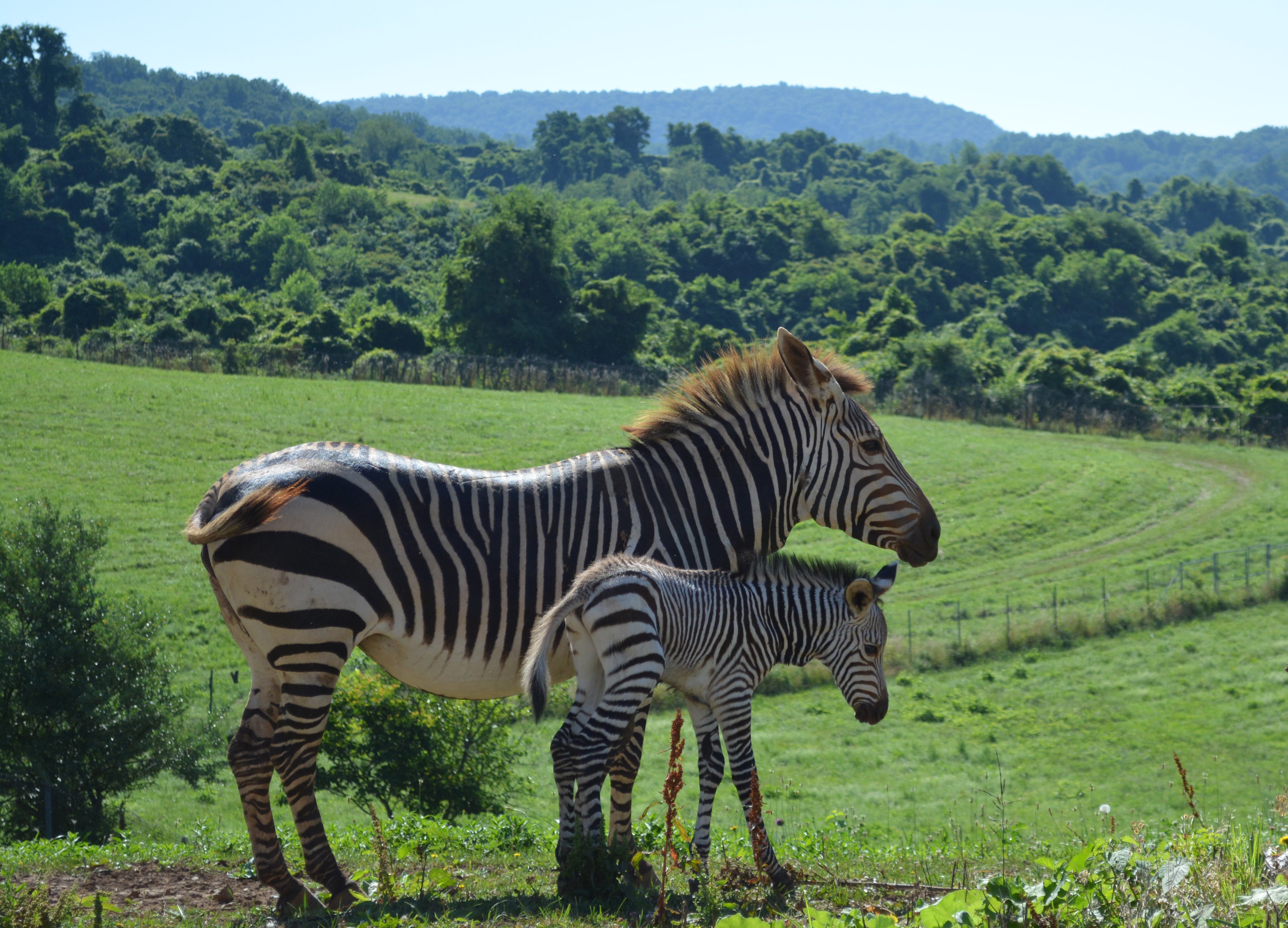
What is the next big milestone for the zebra colt?
A zebra’s back teeth erupt about two weeks after they are born. Those teeth are especially important for grinding, so it will be a big milestone when they grow in fully and he’s able to take that big step from nursing to sampling more “adult” foods, including grass and pellets!
This story appears in the August 2020 issue of National Zoo News. During your next trip to Smithsonian’s National Zoo, don’t miss Grevy’s zebra Moyo at the Cheetah Conservation Station. Due to COVID-19, we’ve implemented new safety protocols, procedures and guidelines to provide a safe and great experience for our visitors, staff and animals. Plan your visit and reserve free timed entry and paid parking passes here.
UPDATE Dec. 21, 2020: Please note that the Zoo is temporarily closed as a public health precaution to help prevent the spread of COVID-19.
